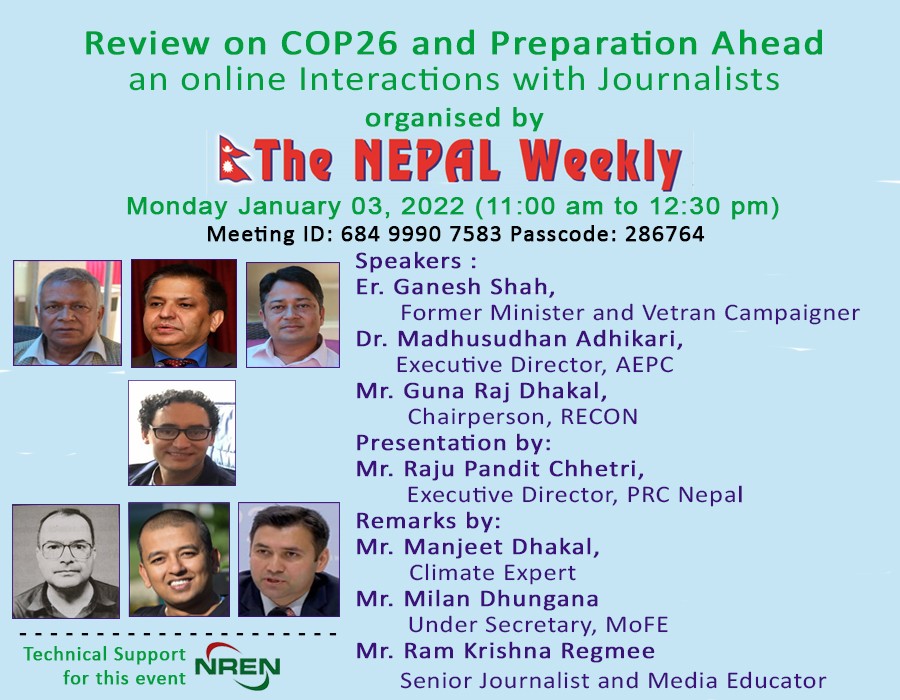 The Nepal Weekly
The Nepal Weekly  September 6, 2022
September 6, 2022
The Kathmandu Valley is a cultural centre in the lap of Himalayas which had been an important trade point between southern plains and the territories in the Himalayas and even beyond. This capital valley especially core Kathmandu city, celebrate the Indra Jatra In the bright fortnight in September. The celebrations last for eight days from the 12th day of the bright fortnight to the 4th day of the dark fortnight. Monsoon rains is almost to over so as the people of the valley get leisure from caring their paddy fields in the by gone days. Therefore, the season is a good time to have cultural activities. (This year the main event of the festival falls on Sunday September 19, 2021).
Indra Jatra is certainly the most spectacular of all Nepalese festivals. Both Hindus and Buddhists celebrate this festival. During the festival, there is much rejoicing, dancing and ceremonies. Thus Indra Jatra is a festival of daces where so many masked dances are performed to vibrant the Kathmandu.

This festival also meant to offer sincere thanks to Lord Indra for good rains so as paddy cultivation is to expect better crop. Some also say this festival is celebrated in the honour of Lord Bhairava who has been regarded as. Lord Shiva’s manifestation and is believed to destroy evil.
On the first day, a long pole is erected at Hanumandhoka premises to propitiate Indra. Following erection of the pole colourful display of classical dancing by masked dancers are performed.
On the third day, as the main event, the living goddess Kumari is brought out into the streets in a special chariot from her temple like residence located in Hanumandhoka Durbar Square. Chariots of Ganesh and Bhairava, represented by two young boys accompany living Goddess Kumari in the city entourage. Lower section of the core city enjoy more on this day as it is their turn to have chariot pulling at their section. The head of the state including high level officers of Nepal government attend the festivities on the occasion. The masked dances make the city lively with excitements of music, dances and activities. Chariots pulling and all other activities are carried out to upper section. The same function is carried out in the central part of the city on the seventh day of the festival. The head of state and other dignitaries participate in the functions only on the third day function.

Indra Jatra can be described in 4 parts. The chariot pulling, display and worship of Lord Bhairava, masked dances and lights offering in memory of deceased ones with wishes for their eternal peace.
The large size masks of Bhairava are displayed in many places of the city is one other part of the festivals. Swet Bhairava at Hanumandhoka and Akash Bhairava at Indrachok are displayed with attractive decorations and special functions of offering Samayebaji (a set of local dishes prepared in Newar recipe) and thwon (locally brewed rice wine) are remarkable.
This festival brings musical life of the city with Sawa Bhaku, Lakhey, Pulukisi, Mahakali Pyakhan of Bhaktapur, Debi Pyakhan of Kilagal are the significant of Indra Jatra. These masked dances make the evenings in Indra Jatra really vibrant. Musical sounds and excitement created by activities of Lakhey and Pulikisi are the attractive parts of the festival while Debi Pyakhan and Mahakali Pyakhan are musical dance performances.

People offer butter lamps at street on the first day of festival. The circumnutating of the shrines located at the core city limits with music and lights is a function to pray for eternal peace to the departed souls of the recently bereaved family. Baumata and Daagin function is also participated with similar reasons. IndraJatrais most commonly known orYeinyaa. Yenyaa means “Kathmandu festival” in Nepal Bhasa. Indra Jatra was started by King Gunakamadeva to commemorate the founding of the city of Kathmandu in the 10th century. Kumari Jatra began in the mid-18th century. Kumari Jatra, which means the chariot festival of Kumari, coincides with Indra Jatra. It was started in 1756 AD during the reign of King Jaya Prakash Malla.





